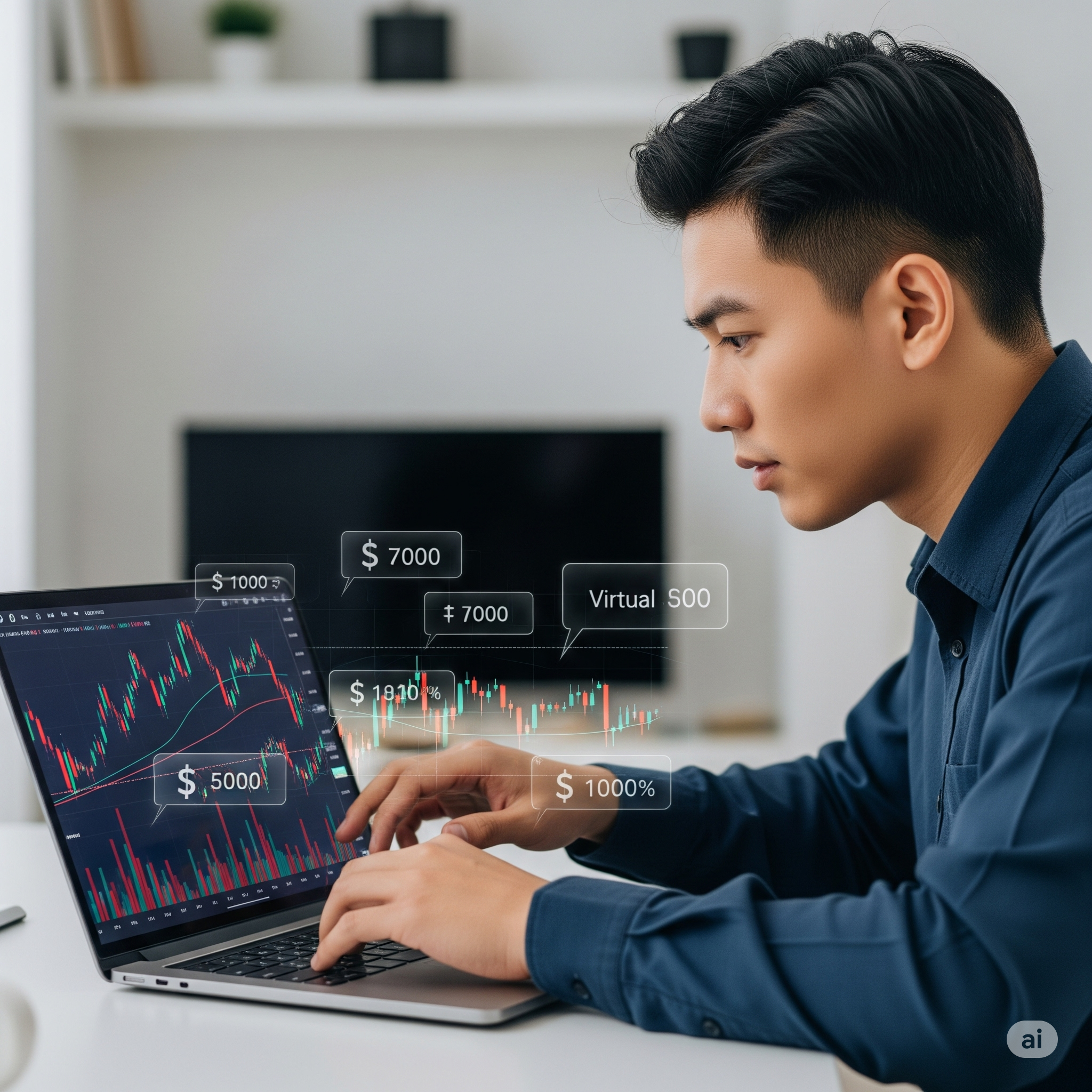In the fast-paced world of financial markets, the allure of potential profits can be intoxicating. However, diving in without preparation is akin to flying a plane without ever setting foot in a cockpit. This is where demo trading, also known as “paper trading” or “simulated trading,” becomes an indispensable tool for aspiring and even experienced traders.
Think of demo trading as your personal financial flight simulator. It offers a risk-free environment to practice navigating the complexities of buying and selling assets, test strategies, and familiarize yourself with a trading platform – all without risking a single real Ethiopian Birr (ETB) or any other actual capital.
How Does Demo Trading Work?
The mechanics of a demo account are designed to mirror live trading as closely as possible, providing a realistic training ground:
- Virtual Capital: Upon opening a demo account with a brokerage or trading platform, you’re instantly credited with a significant amount of “virtual money.” This virtual balance, while substantial (often ranging from $10,000 to $100,000 or more), is purely for simulation purposes and holds no real-world value.
- Real-Time Market Replication: Reputable demo platforms strive for authenticity. You’ll observe real-time price movements, comprehensive charts, and live market data for a wide array of financial instruments – from stocks and forex to commodities, cryptocurrencies, and indices.
- Full Platform Functionality: You gain access to almost every feature available in a live trading account. This includes:
- Placing diverse order types (market, limit, stop-loss, take-profit).
- Utilizing advanced charting tools and technical indicators.
- Managing and monitoring your virtual portfolio’s performance.
- Experiencing realistic trade execution and fills.
- Zero Financial Risk, Zero Financial Reward: This is the core principle. Because no real money is involved, there are no financial consequences for losses, nor are there any actual profits to be withdrawn. All outcomes are purely hypothetical, allowing for uninhibited experimentation.
- Focused Practice & Learning: The primary objective is to facilitate learning. It’s an arena where you can confidently:
- Onboard with the Platform: Become proficient with the software’s interface, tools, and order placement procedures.
- Strategize & Validate: Experiment with various trading strategies (e.g., trend following, mean reversion, fundamental analysis-driven trades) to assess their performance in live conditions.
- Grasp Market Dynamics: Observe how global news, economic reports, and sudden volatility impact asset prices.
- Cultivate Discipline: Begin to practice sticking to a trading plan and managing impulses, laying the groundwork for emotional resilience.
The Undeniable Benefits of a Demo Account
- Risk-Free Education: Learn from mistakes without incurring financial losses, making it the safest form of market education.
- Platform Mastery: Gain complete confidence in using your broker’s trading software before committing real capital.
- Strategy Validation: Rigorously test and refine your trading strategies against live market data.
- Confidence Building: Develop a strong understanding of market mechanisms and build self-assurance in your decision-making.
- Market Exploration: For seasoned traders, demo accounts offer a sandbox to explore new asset classes or complex instruments without risk.
Important Considerations: The Limitations
While invaluable, demo trading isn’t a perfect replica of live trading. It has critical limitations you must acknowledge:
- Absence of Emotional Pressure: The lack of real money means you won’t experience the intense psychological pressures of fear, greed, and anxiety. These emotions can significantly distort decision-making in live trading.
- Execution Nuances: Some demo accounts may offer slightly idealized trade execution (e.g., no slippage), which might not fully reflect the realities of high volatility in a live market.
- Unrealistic Capitalization: Many demo accounts start with a much larger virtual balance than a typical beginner’s real trading capital. This can foster a false sense of security or encourage trading larger positions than would be prudent in a live environment.
- Lack of Real Motivation: Without tangible profits or losses, maintaining the same level of seriousness and discipline as with real money can be challenging for some.
Conclusion: Your Gateway to Prepared Trading
Demo trading stands as a crucial first step for anyone entering the financial markets. It provides a safe, realistic, and highly educational environment to learn, practice, and refine your trading skills.
However, remember that consistent success in a demo account is a strong indicator of preparedness, but it’s not a guarantee of similar results in live trading. The transition from demo to live trading requires not just strategic acumen, but also robust emotional discipline.
By leveraging demo trading effectively, you can build a solid foundation, test your strategies, and gain the confidence needed to navigate the dynamic world of financial markets with greater preparedness and a higher probability of success.
Discover more from Nexus
Subscribe to get the latest posts sent to your email.
